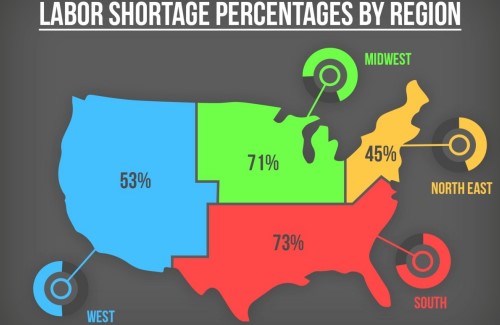The current state of the construction marketplace has changed drastically since the Great Recession. Ask industry leaders from a variety of markets across the country about their current business activity and you are likely to hear, “We are busy!” Long gone are the backlog concerns that plagued many construction firms from 2008 – 2010. However, as demand for construction services continues to rise, availability of skilled labor will be the greatest challenge faced by the industry for many years to come. This common concern leaves many wondering how to effectively mitigate the skills labor gap and reverse a declining trend.
The challenges associated with workforce availability impact the entire spectrum of the Architectural, Engineering and Construction (AEC) community; however, the construction user/consumer is most significantly impacted. With fewer workers available, it becomes increasingly difficult to find qualified tradespeople resulting in delayed schedules, higher costs, compromised quality, and greater risk. Imagine how difficult it would be for the owner of a project to stay within the confines of a budget established years in advance of project commencement. Inflation based on historical trends is usually included in a budget, but there is no relevant historical data that can be accurately scaled to predict labor availability and its impact on costs.
The following information will shed light on current construction workforce statistics:
- The construction industry is expected to grow by almost 20% through 2020
- The average age of a tradesman is 47 years old
- For every 4 skilled trades people that leave the industry each year, there is only 1 replacement trained to fulfill the responsibilities
- Women make up less than 3% of the construction labor force
- 15% of the construction workforce will retire in the next 7 years
*Sources: U.S. Bureau of Labor Statistics, Associated General Contractors of America, Build Your Future. Build America
Some believe the reason for the rapidly declining workforce may be the result of current educational trends. School corporations across the country have devoted significant resources developing standardized tests aimed at preparing students for higher education. Educational programs like home economics, shop class, automotive maintenance, etc., are being dropped despite the diverse talents represented by student populations. As a result, it has become increasingly challenging for students who prefer to work with their hands to find educational programs where they can thrive. Fortunately, there are programs and foundations devoted to raising awareness of the widening skills gap. Examples of these programs include:
- Build Your Future. Build America. – www.byf.org
- mikeroweWORKS Foundation – www.profoundlydisconnected.com
- SkillsUSA – www.skillsusa.org
- Workforce Under Construction – www.workforceunderconstruction.com
Mike Rowe of the mikeroweWORKS Foundation believes the best way to reverse declining workforce trends is to challenge, “the persistent belief that a four-year degree is automatically the best path for the most people.” Perhaps a shift in the public’s perception of what programs should be offered for students will help diversify educational offerings in the future. Time will tell, but thankfully there are numerous leaders and programs across the country dedicated to raise awareness about successful careers in construction.
The SCOOP | June 2017 | More from this issue


